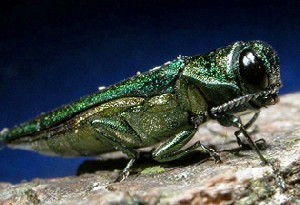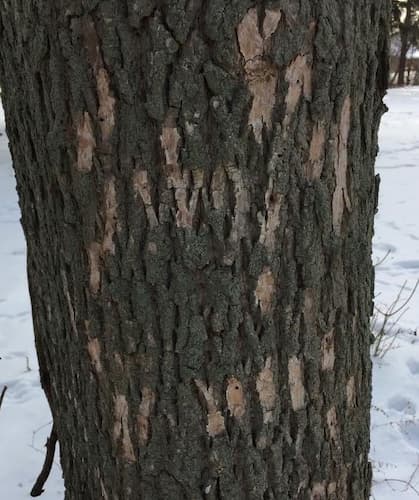Emerald Ash Borer

About the Emerald Ash Borer
The little Emerald Ash Borer is killing millions of ash trees. While North America has billions of Ash trees, this little insect is killing them by the millions every year. There is no effective, long-lasting treatment for this borer. And, there are no natural enemies native to North America. As a result, there is little we can do, to control them. Quarantines, and the removal and proper disposal of infested trees, are the only control methods currently available. And to be frank, they are failing miserably.
Native to Eastern Russia, Northern China, Japan, Mongolia, Korea, and Taiwan, the Emerald Ash Borer (EAB) accidentally arrived in a cargo shipment from one of these Asian countries. It was first spotted in Ash trees in Michigan in 2002. Major borer infestations exist in over 14 states, from the Midwest to the Northeast.
The primary targets, are black, green, blue, and white ash trees. Wherever infestations occur, ash trees lose their canopy and die in about 3-4 years.
There are no Emerald Ash Borer treatment or control methods that truly work. The trees are large, and there are hundreds of millions of European Ash Borers, if not billions of these insects, in trees, forests, communities, and neighborhoods. The main control method is to remove trees that are found to be infested. Removal of affected trees, is costing municipalities millions of dollars a year.
If you have an infested tree, remove it immediately. Do not store the wood, as ash borer larvae will over-winter, and emerge in the spring.
Did You Know? Baseball bats are made of ash wood.
Scientific name: Agrilus planipennis (Fairmaire)
Emerald Ash Borer Life Cycle
The ash borer has a one-year life cycle. Adult males are flying beetles, approximately 1 1/2 inches long. Female beetles grow a little larger than males. Adults are active during the day, from mid-June to mid-August. Females then mate and will lay 60 to 90 eggs into the crevices of the trunk and branches of ash trees.
The eggs hatch in 7-10 days and the larvae bore or chew into the bark of the tree, feeding on the phloem and the outer sapwood. Larvae overwinter in the bark, emerging in April or May through “D” shaped holes. Pupation occurs shortly after, with adult beetles emerging, to begin the destructive cycle anew.

Signs of Emerald Ash Borer Damage
Large numbers of larvae damage the tree, disrupting the flow of nutrients and water up the tree. You may or may not actually see the insects on the tree trunks, either an adult or larvae stages.
Signs of tree damage include:
- an Increasing number of holes in the bark.
- The appearance of “D” shaped holes, occurs the first year after infestation begins.
- Yellowing foliage
- Tree canopy appears weak and thin.
- Shoots growing from the roots and trunk, as the tree tries to compensate for the lack of foliage.
Related Articles
Also, people who read this article will like:
Please support our site. Shop for:
- rmmatthews100@hotmail.com
- 585-721-6528
- Rochester, NY
©1999-2024 GardenersNet.Com, All Rights Reserved

